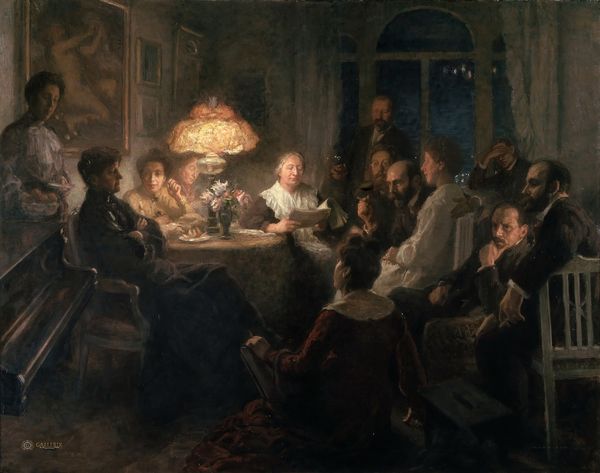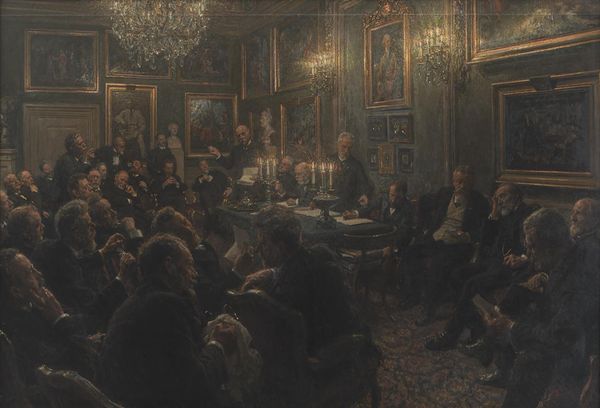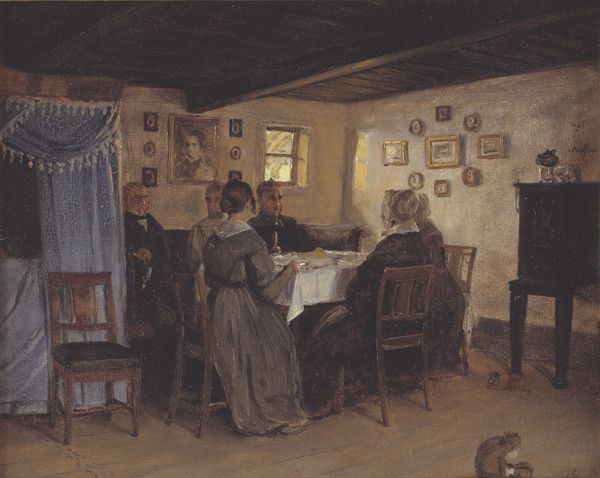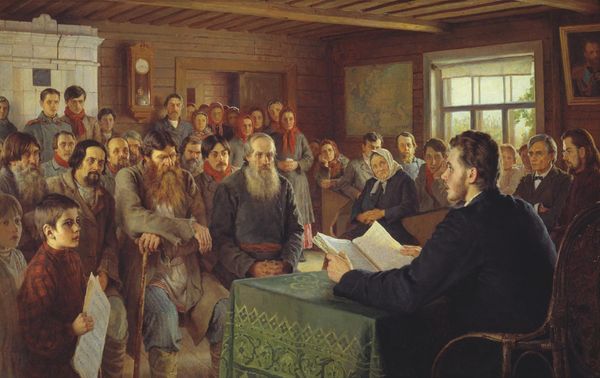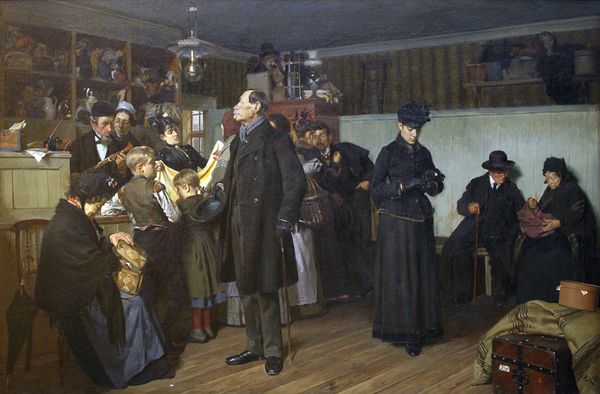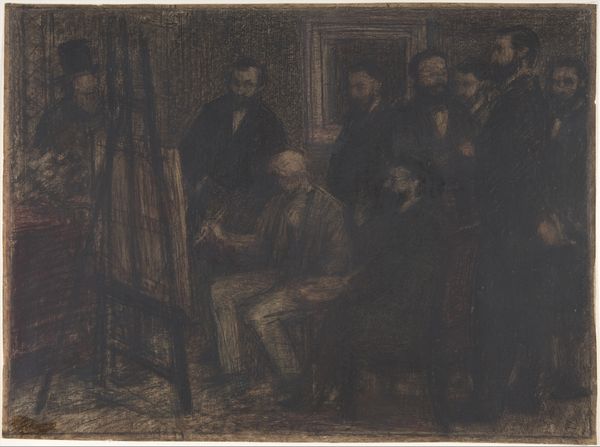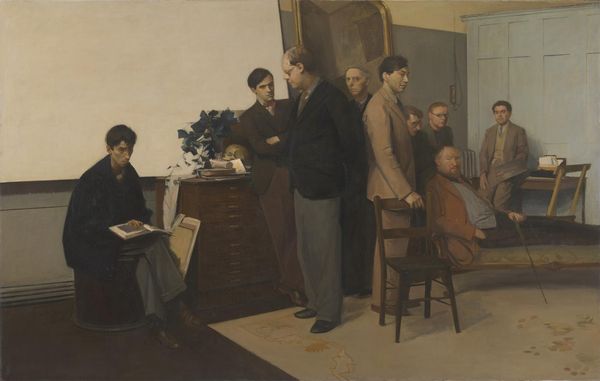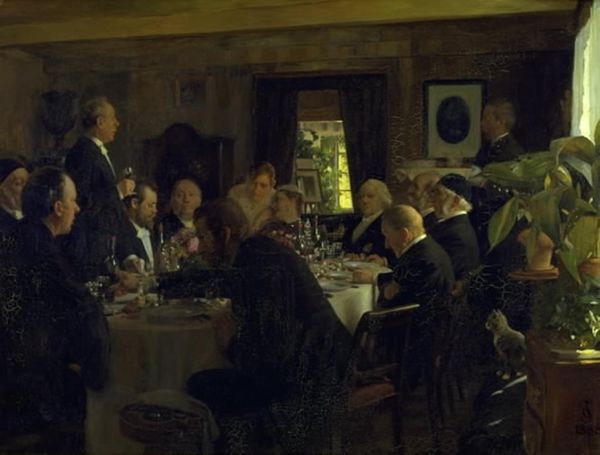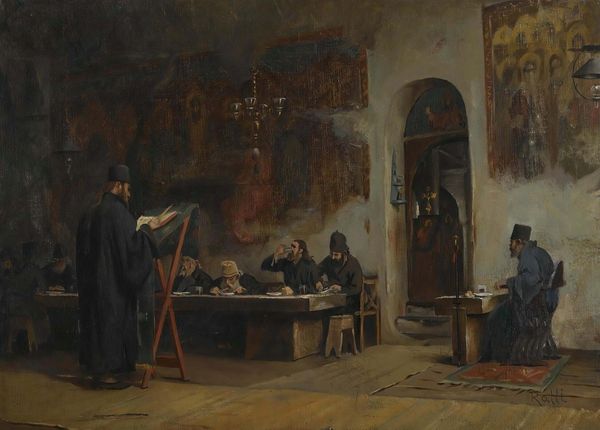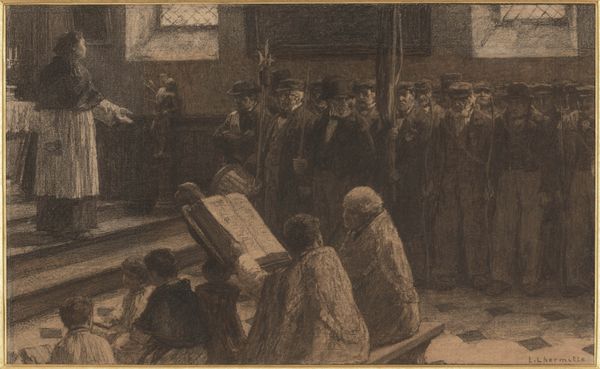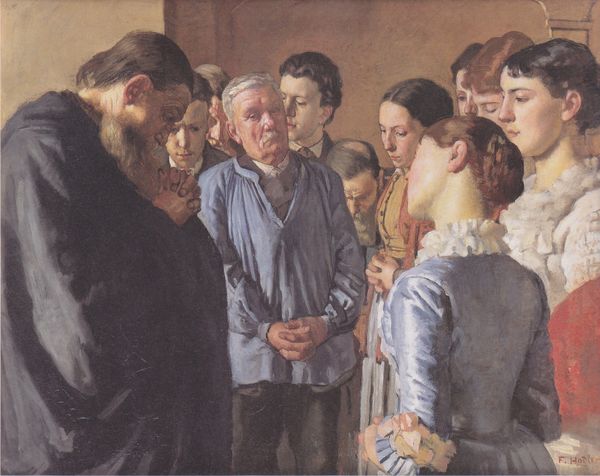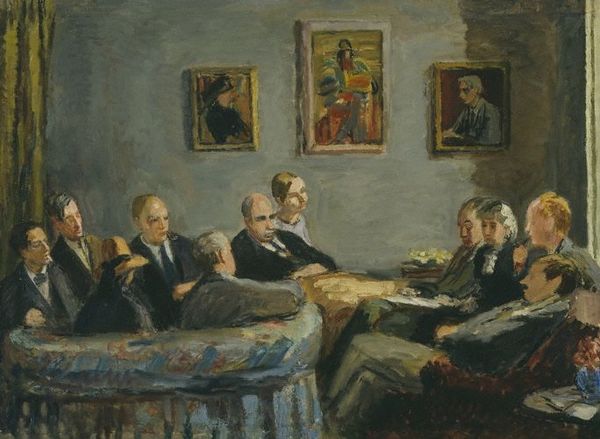
Dimensions: 103.5 cm (height) x 124.5 cm (width) (Netto), 120.8 cm (height) x 142.8 cm (width) x 9.5 cm (depth) (Brutto)
Anna Ancher painted "A Funeral," an oil on canvas, capturing a somber moment. Dominating the scene are wreaths, ancient symbols of cyclical life, displayed both on the coffin and hanging behind the clergyman. In ancient Greece, wreaths adorned victors and the deceased, signifying triumph or eternal life. Consider the laurel wreath in classical art, a symbol of Apollo and achievement, later adopted by Christianity to represent martyrdom and saintliness. Here, in Ancher’s painting, these evergreen circles evoke not just grief but also continuity, reflecting a hope for renewal and remembrance. The collective mourning, shrouded in dark attire, speaks to a deep, shared psychological experience. The painting taps into our primal understanding of loss, using visual cues passed down through generations to elicit empathy and reflection. The wreath, a potent emblem, reminds us of the endless return, a subconscious reassurance in the face of mortality. It is an emblem of perpetual return and transformation.
Comments
Anna Ancher is regarded as one of the pre-eminent Impressionist painters within Danish art. She paints her works from the outskirts of modernity and tends to avoid eye contact; that way, spectators can explore the spaces created without feeling unobserved, becoming enveloped by the psychological and mental moods evoked in the work. Anna Ancher’s first exhibited work depicted two poor colourful characters, Per and Stine Bollerhus, going home from the church in Skagen. Several years later she attended Stine’s funeral and gathered her impressions in the painting A Funeral.The painting's motifAs in most of Anna Ancher’s pictures, no-one attempts to create eye contact. We are free to investigate the space unnoticed, find our place, and let ourselves be absorbed by the meditative calm. The low-ceilinged room is filled with light, allowing Anna Ancher an opportunity to demonstrate her mastery of colour in the meeting between the blue, pink, and green hues; colours that also serve a symbolic function in showing the old woman the road to another world. The transition between realism and symbolismAs in many other works from the time, created during a period of transition between realism and symbolism, the reference to a transcendental existence is not a postulate; it remains so much in touch with reality that it is primarily seen as a psychological condensation. An impressionistic painterAlong with Theodor Philipsen (1840-1920), Anna Ancher is regarded as the most important Impressionistic painter on the Danish art scene. But whereas the French Impressionists were intimately linked with modern life, Anna Ancher painted her paintings on the outskirts of the modern: from Skagen, the remotest part of Denmark, more opposed to than in tune with the hectic and the ephemeral.
Join the conversation
Join millions of artists and users on Artera today and experience the ultimate creative platform.
Anna Ancher’s first exhibited painting showed two poor eccentrics, Per and Stine Bollerhus. Several years later she took part in Stine’s funeral and conveyed her impressions in A FUNERAL. As in most of Anna Ancher’s paintings, no-one seeks to establish eye contact. You can slip in unnoticed, becoming absorbed in the meditative calm. The room is filled with light, allowing Ancher to demonstrate her mastery of colour in the meeting between blues, pinks, and greens. Alongside Theodor Philipsen, Anna Ancher is regarded as the pre-eminent Danish Impressionist. In contrast to French Impressionists her images come from the margins of modern life: From Skagen, the remotest part of Denmark. She paints against – rather than with – all things hectic, fleeting, and ephemeral.
